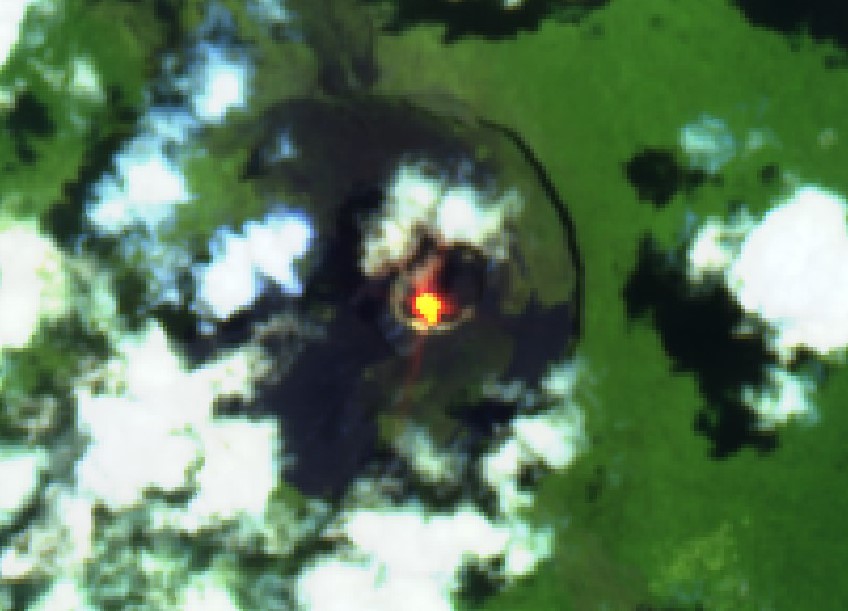Report on Nyamulagira (DR Congo) — December 2021
Bulletin of the Global Volcanism Network, vol. 46, no. 12 (December 2021)
Managing Editor: Edward Venzke.
Research and preparation by Paul Berger.
Nyamulagira (DR Congo) Frequent thermal anomalies from the lava lake during June-November 2021
Please cite this report as:
Global Volcanism Program, 2021. Report on Nyamulagira (DR Congo) (Venzke, E., ed.). Bulletin of the Global Volcanism Network, 46:12. Smithsonian Institution. https://doi.org/10.5479/si.GVP.BGVN202112-223020
Nyamulagira
DR Congo
1.408°S, 29.2°E; summit elev. 3058 m
All times are local (unless otherwise noted)
Nyamulagira, also known as Nyamuragira, is a large shield volcano in the Democratic Republic of the Congo near the borders of Uganda and Rwanda. A summit crater in the NE part of the volcano’s caldera has hosted a lava lake, sometimes intermittent, but continuous since April 2018, with associated thermal anomalies and gas emissions (BGVN 44:05, 45:06, 46:06). This report covers activity during June-November 2021, using satellite data.
Satellite-based MODIS instruments detected numerous thermal anomalies during June-November 2021, as shown in both the MODVOLC and MIROVA systems. Sentinel-2 infrared imagery also detected an almost continuous thermal signal from the lava lake in the summit crater. Thermal activity appeared generally to diminish over time during this period. Numerous thermal anomalies were recorded by MIROVA during June-November 2021, but far fewer between mid-July and mid-August and during mid-October (figure 89). MODVOLC thermal alert counts were consistent with this pattern.
Sentinel-2 infrared imagery showed an extensive thermal anomaly within the summit crater during the reporting period as the result of its lava lake, except during a three-week period after 5 August when the thermal signal completely disappeared. By 25 August the strong thermal anomaly was again visible (figure 90). A faint gas emission could sometimes be seen on the S portion of the crater, but on most days during this period weather clouds obscured visibility.
Geological Summary. Africa's most active volcano, Nyamulagira (also known as Nyamuragira), is a massive high-potassium basaltic shield about 25 km N of Lake Kivu and 13 km NNW of the steep-sided Nyiragongo volcano. The summit is truncated by a small 2 x 2.3 km caldera that has walls up to about 100 m high. Documented eruptions have occurred within the summit caldera, as well as from the numerous flank fissures and cinder cones. A lava lake in the summit crater, active since at least 1921, drained in 1938, at the time of a major flank eruption. Recent lava flows extend down the flanks more than 30 km from the summit as far as Lake Kivu; extensive lava flows from this volcano have covered 1,500 km2 of the western branch of the East African Rift.
Information Contacts: MIROVA (Middle InfraRed Observation of Volcanic Activity), a collaborative project between the Universities of Turin and Florence (Italy) supported by the Centre for Volcanic Risk of the Italian Civil Protection Department (URL: http://www.mirovaweb.it/); Hawai'i Institute of Geophysics and Planetology (HIGP) - MODVOLC Thermal Alerts System, School of Ocean and Earth Science and Technology (SOEST), Univ. of Hawai'i, 2525 Correa Road, Honolulu, HI 96822, USA (URL: http://modis.higp.hawaii.edu/); Sentinel Hub Playground (URL: https://www.sentinel-hub.com/explore/sentinel-playground).



